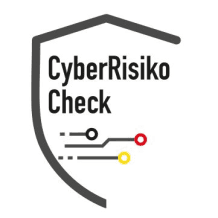What is LSASS.exe?
LSASS.exe stands for Local Security Authority Subsystem Service, a critical process in Microsoft Windows operating systems that is responsible for enforcing security policies on the system. This process manages numerous security aspects, including authentication, logging in, and verifying user rights.
### Why is LSASS.exe a popular target for hackers?
Attackers often target LSASS.exe because it contains valuable information such as logon credentials and security identifiers. By manipulating this process, hackers can gain access to sensitive data and potentially take full control of a system.
### How does hacking LSASS.exe work?
Hacking attempts on LSASS.exe can take various forms:
- Memory dumps: Hackers may try to capture the process memory of LSASS.exe to obtain unencrypted credentials.
- Exploitation of vulnerabilities: Unpatched security holes may be exploited to gain access to the LSASS.exe process.
- Malware: Malicious software can be specifically designed to target LSASS.exe and exfiltrate sensitive information.
## Typical dangers when attacking LSASS.exe
❌ Theft of credentials
❌ Privilege escalation
❌ Lateral movement within a network using stolen credentials
## Protective measures against attacks on LSASS.exe
✔ Regular security updates: Ensure that your operating system and all applications are up to date to close known vulnerabilities.
✔ Use of antivirus and anti-malware software: Employ security software specifically designed to detect and prevent hacking attempts.
✔ Implementation of network segmentation: Limit the movement range of a potential intruder by dividing your network into smaller, well-secured areas.
✔ Use of Credential Guard: Microsoft offers this security feature to secure credentials and restrict access to LSASS.exe.
## FAQs about LSASS.exe Hacking
How do I know if LSASS.exe has been compromised?
A sudden high memory usage or unusual network activities may indicate a compromise.
Can I simply disable LSASS.exe?
No, disabling this process may cause your system to run unstable or not function at all. Protection instead of deactivation is the right approach.
## Have your system regularly checked
🔒 Ensure that your network remains secure by conducting regular security audits.
📌 Related terms: credential theft, security vulnerabilities in operating systems
Stay informed about the latest security threats and how to protect yourself to ensure your data remains secure and protected. Security starts with knowledge and endless vigilance against possible attacks.
Hacking LSASS.exe in Germany: Current Developments
The significance of hacking LSASS.exe in Germany is growing continuously. According to recent studies by the Federal Office for Information Security (BSI), German companies are increasingly affected by cyber threats. The Bitkom Association reports that 84% of German companies have been victims of cyberattacks in the past two years.
Particularly in the area of hacking LSASS.exe, the following trends are evident:
Increasing investments in preventive security measures
Heightened awareness of holistic security concepts
Integration of hacking LSASS.exe into existing compliance frameworks
EU Compliance and Hacking LSASS.exe
With the introduction of the NIS2 Directive and tightened GDPR requirements, German companies need to adjust their security strategies. Hacking LSASS.exe plays a central role in meeting regulatory requirements.
Key compliance aspects:
Documentation of security measures
Regular reviews and updates
Proof of effectiveness to supervisory authorities
Practical implementation in corporate everyday life
The integration of hacking LSASS.exe into corporate everyday life requires a structured approach. Experience shows that companies benefit from a gradual implementation that considers both technical and organizational aspects.
Think of hacking LSASS.exe as insurance for your company: the better prepared you are, the lower the risk of damage from security incidents.
Further security measures
For a comprehensive security strategy, you should combine hacking LSASS.exe with other security measures:
Vulnerability Management - Systematic vulnerability management
Penetration Testing - Comprehensive security tests
Security Hardening - Employee awareness
Incident Response Plan - Preparedness for security incidents
Conclusion and Next Steps
Hacking LSASS.exe is an essential building block of modern cybersecurity. Investing in professional hacking LSASS.exe measures pays off in the long run through increased security and compliance.
Do you want to optimize your security strategy? Our experts are happy to advise you on the implementation of hacking LSASS.exe and other security measures. Contact us for a non-binding initial consultation.
🔒 Act now: Have your current security situation assessed by our experts
📞 Request a consultation: Schedule a free initial consultation on hacking LSASS.exe
📋 Compliance Check: Review your current compliance situation
📌 Related Topics: Cybersecurity, IT security, compliance management, risk assessment
Best Practices for Hacking LSASS.exe
The successful implementation of hacking LSASS.exe requires a systematic approach. Based on our many years of experience in cybersecurity consulting, the following best practices have proven effective:
Strategic Planning
A well-thought-out strategy is the foundation for successful hacking LSASS.exe. When doing so, you should consider the following aspects:
Define clear objectives and success measurement
Involve stakeholders early and establish responsibilities
Calculate realistic timelines and budgets
Conduct risk assessment and contingency planning
Technical Implementation
The technical implementation of hacking LSASS.exe should be done gradually:
Analysis of the current situation: Assessment of existing security measures
Gap analysis: Identification of improvement potentials
Pilot project: Test run in a limited area
Rollout: Gradual expansion to the entire company
Monitoring: Continuous monitoring and optimization
Frequent challenges and solutions
Similar challenges regularly arise during the implementation of hacking LSASS.exe. Here are proven approaches to solutions:
Resistance to change
Employees are often skeptical about new security measures. Successful change management strategies include:
Transparent communication about benefits and necessity
Training and continuing education measures
Involvement of opinion leaders as multipliers
Gradual introduction with quick wins
Budget constraints
Limited resources require a prioritized approach:
ROI calculation for different measures
Phased implementation by priorities
Utilization of synergies with existing systems
Consideration of compliance requirements
Success measurement and KPIs
The success of hacking LSASS.exe measures should be measurable. Relevant metrics include:
Quantitative metrics
Number of identified and resolved vulnerabilities
Reduction of average response time to security incidents
Improvement in compliance ratings
ROI of implemented security measures
Qualitative assessments
Employee satisfaction and acceptance
Feedback from customers and partners
Evaluation by external auditors
Reputation and trust in the market
Future trends and developments
The landscape of cybersecurity is continuously evolving. Current trends influencing hacking LSASS.exe include:
Artificial Intelligence: AI-driven threat detection and response
Zero Trust Architecture: Trust is not assumed, but continuously verified
Cloud Security: Adaptation to hybrid and multi-cloud environments
IoT Security: Protection of connected devices and systems
Quantum Computing: Preparation for post-quantum cryptographic methods
Companies that invest in hacking LSASS.exe today are optimally positioning themselves for future challenges and opportunities.
Your next step
The implementation of hacking LSASS.exe is an investment in the future of your company. Our experts will assist you in developing a tailored solution that meets your specific requirements.
Start today:
📞 Free consultation: Schedule a non-binding conversation
📋 Security Assessment: Have your current security situation assessed
🎯 Tailored solution: Development of an individual hacking LSASS.exe strategy
🚀 Implementation: Professional execution with ongoing support
Contact us today and take the first step towards a more secure digital future.




